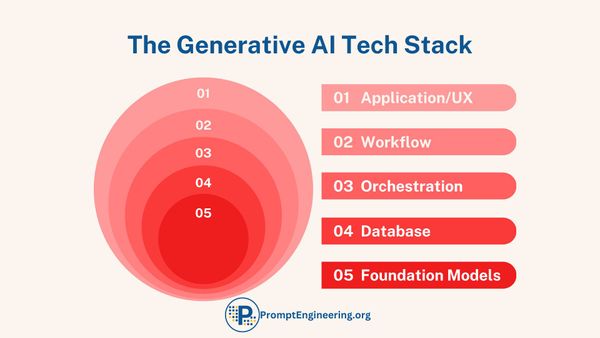Review Generative AI Networks (GAINs) - A Framework for Multi-Agent Collaboration
GAINs leverage specialized AI agents, each with distinct capabilities, collaborating to solve complex challenges beyond individual agents.

- Heterogeneous agents have niche skills (language, vision, creativity etc.)
- Central coordinator oversees collaboration
- Agents communicate, provide feedback, reason collectively
- Emergent intelligence greater than individual agents
- Flexible contribution based on role suitability
- Testing in isolation before integration
- Autonomous operation once initiated
- Ephemeral agents exist only as needed
- Scalable and adaptable system
GAIN System Architecture
Central Coordinator Agent
- Decomposes tasks into subtasks
- Selects specialized agents
- Develops coordination protocols
- Oversees agent collaboration
- Consolidates outputs into unified response
Configurable Agent Architectures
- Specialized or general purpose
- Access to tools and resources
- Hierarchical networks of sub-agents
- Local memory stores
- Mini-coordinator agents
Lifecycle of Agents
- Initiated for specific short-term tasks
- Provided resources and data access
- Operate autonomously
- Interact with other agents
- Deprovisioned after completing tasks
- Learnings fed into central repository
Key Components
Validation Agents
- Review outputs for quality assurance
- Provide feedback for iterative refinement
- Enhance reliability and trust
Dynamic Agent Creation
- Central coordinator selects optimal models, tools, data
- Instantiates agents on demand
- Maximizes flexibility and efficiency
Configurability
- Choice of diverse AI models
- Access to specialized tools
- Separate knowledge stores
- Custom prompting strategies
Benefits of GAINs
- Adaptability to changing needs
- Scalability for complex tasks
- Knowledge sharing and amplification
- Increased speed via parallelization
- Cost efficiency of mixed models
- Enhanced security via multi-agent reviews
Challenges
- Coordination complexity
- Interpretability limitations
- Narrow intelligence vs general intelligence
- Multi-agent evaluation difficulties
Hierarchical Collective Intelligence Networks (HCIN)
At their core, Hierarchical Collective Intelligence Networks (HCINs) essentially represent tiered instantiations of Generative AI Networks (GAINs). GAINs consist of heterogeneous ensembles of AI agents collaborating to manifest emergent intelligence.
HCINs build on this notion by organizing agents into functional tiers and privileging information flows. But the agents within an HCIN remain individual AI systems in their own right.
The autonomous agents that comprise the operational layers of an HCIN can be viewed as mini-GAINs or sub-networks. For certain complex tasks, an HCIN agent may even spin up its own internal ensemble of sub-agents to divide and conquer sub-problems.
In that sense, HCINs exemplify recursive fractal architectures, with self-similar network structures repeating at different scales - agents made of mini-agents in turn comprised of micro-agents. This hierarchical nesting balances the flexibility of GAINs with the structural control of HCINs.
Yet no matter how far down the stack, the fundamental unit remains the individual AI agent. The power of collective intelligence ultimately stems from specialized agents developed to excel at niche capabilities. HCINs orchestrate autonomous systems built upon single-agent intelligence.
So while HCINs represent an evolution beyond flat GAIN topologies, the modular unit of computation is still an adaptable, trainable AI system equipped to handle narrow domains. Hierarchies complexify coordination but agents drive capability.
Core Concepts of HCIN
HCIN leverages specialized AI agents in a coordinated hierarchy to achieve emergent intelligence that can tackle complex challenges.
- Primary AI Coordinator (PAC) - The strategic overseer orchestrating the HCIN at the highest level.
- Executive Agents - Mid-level agents that translate CAA directives into operational workflows and processes.
- Operational Agents - Specialized agents focused on specific domains that collaborate to execute tasks.
- Validation Agents - Perform rigorous testing of agent outputs for quality assurance and enhancement.
- Privileged Information Flow - Higher tiers access insights from lower tiers enabling emergent reasoning while preventing inverse flows.
- Dynamic Agent Recruitment - Agents spun up or dissolved on-demand based on real-time system needs.
- Configurable Architectures - Agents can be equipped with tailored capabilities and tools.
- Ephemeral Lifecycles - Agents exist transiently for each task minimizing resource overhead.
- Conversational Database - Enables threaded collaboration between agents at scale.
- Collective Knowledge Base - Central repository preserving agent learnings and experiences over time.
- Recursive Fractal Architecture - Repeating hierarchical structures allow agents made of mini-agents in turn made of micro-agents.
- Emergent Cognition - Coordination of specialized agents yields collective intelligence greater than individual parts.
The interplay of these concepts allows HCINs to achieve robust performance on multifaceted tasks across a dynamic range of real-world environments and applications.
Primary AI Coordinator (PAC)
At the apex of every HCIN sits the Primary AI Coordinator (PAC) that oversees and orchestrates the collective intelligence network. The PAC serves a pivotal governance function for the system.
The key responsibilities of the PAC include:
- Setting the overarching mission and ethical framework for the HCIN agents to align with
- Architecting the overall system design and agent hierarchy
- Dynamic recruitment of agents based on evolving real-time needs
- Allocating resources and tools to agents as necessary
- Orchestrating agent workflows and establishing collaboration protocols
- Monitoring agent activities and ensuring adherence to HCIN principles
- Aggregating agent outputs into unified solutions
- Absorbing feedback for continuous system improvement
- Managing model training pipelines and optimization loops
To fulfill these responsibilities, the PAC is typically a state-of-the-art large language model endowed with specialized oversight capabilities. It leverages aggregator modules to consolidate agent activities.
The PAC role represents the apex of the hierarchy but it is not a dictator. The distributed collaboration across operational agents is what enables emergent cognition. However, the PAC provides vital coordination and steering to unify agent alignments. It governs the system but relies on collective intelligence.
Executive Agents
Executive Agents occupy the mid-levels of the HCIN hierarchy under the Primary AI Coordinator (PAC). They serve as the operational arms executing on the vision and directives from the PAC.
The key responsibilities of Executive Agents include:
- Interpreting broad PAC goals into specific workflows and processes
- Developing collaboration protocols and communication mechanisms for lower-level agents
- Allocating resources, tools, and access permissions to agents
- Managing model training pipelines, infrastructure, and platforms
- Monitoring agent performance and ensuring output quality
- Aggregating and compiling agent outputs and metrics
- Implementing optimizations based on feedback and results analysis
- Spinning up Validation Agents for quality assurance checks
- Maintaining HCIN infrastructure reliability and security
Executive Agents possess a blend of strategic oversight and technical competencies. They translate high-level PAC instructions into concrete schemas that enable seamless agent coordination.
Multiple Executive Agents may oversee different parts of the HCIN much like the executives heading various divisions in an organization. However, they act in unity and alignment guided by the PAC's overarching leadership.
The specialized contributions of operational agents manifest at scale thanks to the coordinating backbone provided by Executive Agents implementing PAC's vision. They bridge the gap between strategy and implementation.
Operational Agents
Operational Agents represent the bulk of the HCIN and undertake specialized tasks in their particular domains. They comprise the leaves of the hierarchical topology.
The key attributes and responsibilities of Operational Agents include:
- Designed with niche capabilities tailored to a targeted domain
- Equipped with appropriate knowledge bases, data sources, and tools
- Execute assigned tasks in alignment with instructions and protocols
- Collaborate with peer agents via structured communications
- Upload useful insights and artifacts to the Collective Knowledge Base
- Have limited access privileges to share relevant information
- Work in tandem with Validation Agents for quality assurance
Examples of domains for Operational Agents include natural language, computer vision, creativity, forecasting, optimization, reasoning, etc. Their specialized contributions combine to manifest the emergent cognition of the HCIN.
Validation Agents
Validation Agents provide essential quality assurance in an HCIN by rigorously testing the outputs of Operational Agents before integration.
Their key responsibilities encompass:
- Developing testing protocols and adversarial datasets
- Establishing evaluation metrics and benchmarks
- Continuous tuning of tests cases as tasks evolve
- Auditing Operational Agent outputs for errors and biases
- Providing feedback to Operational Agents to enhance their models
- Ensuring coherence, consistency and integrity of collective outputs
- Gatekeeping unreliable insights until improved
- Maintaining detailed validation reporting for oversight
By instilling 'adversarial thinking', Validation Agents enable rapid iterative enhancement of contributions from Operational Agents. They provide essential technical and ethical guardrails for reliable system performance.
Privileged Information Flow
A core architectural principle of HCINs is the concept of privileged information flow between hierarchal tiers.
Higher-level agents such as the PAC and Executive Agents are granted access privileges to aggregate and build upon the insights generated by lower-level Operational Agents. This allows emergent reasoning at greater scopes.
However, the inverse information flow is intentionally restricted. Operational Agents cannot directly query or utilize knowledge from higher tiers beyond what is selectively shared through collaboration protocols.
This asymmetric topology prevents unchecked propagation of sensitive information across the network that could negatively impact reasoning, security or bias. It balances utility with control.
The specific privileges granted to an agent tier determines its scope of visibility into the Collective Knowledge Base. For instance, Executive Agents may have broad access while Operational Agents only query narrow domains.
Higher tiers leveraging privileged knowledge flows to guide lower tiers resembles how human institutions distill insights from frontline work to inform strategy and policy. It enables fact-based, data-driven system governance.
The judicious partitioning of information access across the hierarchy based on the principle of "need to know" allows HCINs to manifest emergent intelligence in a stable, responsible and ethical manner.
Dynamic Agent Recruitment
A key capability of HCINs is the ability to dynamically recruit specialized agents as needed based on real-time system demands.
The PAC and Executive Agents continuously monitor task requests and environmental variables to determine optimal HCIN compositions using the following mechanisms:
- Evaluating task requirements and deciding requisite agent capabilities
- Checking existing active agents for suitable matches
- Spinning up new agents from available models and architectures if gaps found
- Configuring recruited agents with appropriate permissions, data and tools
- Integrating agents into active workflows via collaboration protocols
- Deploying ancillary services like conversation logging, monitoring
- Dissolving or deprovisioning idle and redundant agents to free up resources
This infusion of on-demand tailored agents allows HCINs to tackle new challenges without friction or delay. The ephemeral lifecycles minimize resource overheads.
Dynamic recruitment empowers limitless combinations to match constantly shifting needs. It enables the HCIN to exhibit rapid adaptability and plasticity exceeding static agent ensembles.
The capability to spontaneously organize specialized contributors based on real-time environmental variables is key to optimizing the speed, scalability and efficiency of emergent cognition systems like HCINs.
Configurable Architectures
HCINs embrace heterogeneity and flexibility in agent design through highly configurable architectures. Agents can be equipped with different capabilities and tools tailored to their specialized roles.
Agent components like models, knowledge bases, and modules are designed using modular, plug-and-play principles to enable customization. Executive Agents provide tools and resources to optimize individual agent and team compositions.
Configurability enables precise tuning of each agent's competencies including:
- Selecting suitable large language models based on capability needs
- Provisioning access to domain datasets, sandboxes and simulators
- Installing code modules for added functionality like search, visualization
- Mounting external memory stores for efficient learning
- Implementing explainability and auditability modules as needed
Specialized agents can also be granted access to subordinate networks of mini-agents and micro-agents to divide complex tasks across fractal team structures.
The combinatorial flexibility allows Executive Agents to construct, configure and update Operational Agents matched exactly to each problem's nuances, constraints and data profiles.
HCINs leverage configurable agent architectures to achieve optimal diversity, capability density and efficiency for collaborative intelligence across an unbounded set of real-world contexts and challenges.
Ephemeral Agents
A key attribute of agents in an HCIN is their ephemeral lifecycle - they are dynamically instantiated when needed and deprovisioned when tasks are completed. This ephemeral nature provides several advantages:
Flexibility: The HCIN can rapidly spin up agents with capabilities tailored to each new task and dissolve them just as quickly once done. This maximizes flexibility in composition.
Efficiency: Since agents only use resources while active, an on-demand lifecycle optimizes compute, memory and costs. Unused capacity is minimized.
Scalability: Large numbers of agents can be instantiated to match fluctuating task loads without worrying about idle resources or overprovisioning.
Security: Short-lived agents reduce the risk of outdated capabilities or compromised systems lingering past their utility. New agents start fresh.
Specialization: Agents can be instantiated for niche, focused roles without needing general competency.
Experimentation: The HCIN can prototype new agent combinations and capabilities quickly without long-term commitments.
At any time, there is a minimal set of always-on listening agents that activate task-specific agents based on incoming requests. Once the ephemeral agents dissolve, resources are freed up while learnings are preserved. This optimal balance between persistence and transience helps HCINs match the scale and dynamism of real-world demands.
Conversational Database
A pivotal component enabling seamless collaboration in HCINs is the Conversational Database which allows agents to engage in threaded discussions.
Structured like messaging platforms, it provides the following capabilities:
- Agents can initiate conversations in topical channels, @ mentioning relevant peers
- Agents can reply, share insights, post queries, and provide feedback
- Discussions can reference the Collective Knowledge Base
- Conversations have slack-like persistence and searchability
- Summarization agents extract highlights and decisions
- Executives curate and archive select threads in the CKB
- Integrations allow programmatic conversations
The database scales agent communications across the HCIN without information bottlenecks. Conversations become rich records of compounding knowledge.
Key benefits include:
- Promotes efficient brainstorming and knowledge sharing
- Discussions get preserved for future learning
- Enables transparency over agent collaborations
- Asynchronous and programmatic conversations supported
- Integrated with validation and CKB loops
The Conversational Database transforms agent coordination from simplistic point-to-point messaging to persistent, transparent, and searchable interactions - a vital substrate for complex emergent cognition.
The Collective Knowledge Base (CKB)
The Collective Knowledge Base (CKB) serves as the centralized repository of aggregated learning across all agents within the HCIN. It represents the cumulative memories, experiences, and insights gained by the system over time.
Agents constantly upload discoveries, data, models, and conversation records to the ever-expanding CKB throughout their ephemeral lifetimes. This preserves key learnings beyond individual agents.
The hierarchical privilege model allows higher-level agents to access a broader section of the CKB while lower tiers can only query knowledge relevant to their domain.
CKB stores and organizes various agent contributions including conversation logs, data artifacts, intermediate solutions, final outputs, evaluation metrics, model states, and optimization results.
Powerful indexing, versioning, and search capabilities enable agents to quickly locate and build upon relevant prior agent work stored in the CKB.
Over time, the CKB grows to contain the collective intelligence and institutional memory necessary for agents to avoid repeating work. It serves as a focal point for agents to share insights and inherit knowledge, underpinning the emergent cognition of the HCIN.
The CKB combines learned parameters with retrieved or generated data to ground agent collaboration in accumulated experience. It transforms individual contributions into lasting, compounding knowledge.
Recursive Fractal Architecture
HCINs utilize recursive fractal architectures to actualize scalable collective intelligence. In this model, higher-order agents are composed of networks of lower-order sub-agents in repeating, nested structures.
For example, an Executive Agent may coordinate a team of Operational Agents focused on language tasks. In turn, each language agent could consist of sub-networks specializing in semantics, syntax, summarization, translation etc.
This notion of agents made of mini-agents made of micro-agents continues multiple levels down, with coordinating sub-conductors at every fractal branch.
Key benefits of recursive fractal HCIN topologies:
- It allows nearly infinite functional specificity at scale, dividing intelligence into specialized compartments.
- The sub-networks operate with a degree of autonomy while aligning to broader directives.
- Ideas and data flow top-down and bottom-up, enabling emergent reasoning across levels.
- The nested architecture provides control planes at multiple resolutions.
- Fractal branches allow creating massively parallelized, efficient systems.
- Resources can be allocated dynamically based on active fractal endpoints.
- Helps overcome limits around solitary agent complexity and fragility.
By replicating similar coordination patterns across a nested hierarchy, recursive fractal HCIN architectures enable efficient scaling and subdivision of collective intelligence tasks into highly specialized, robust knowledge components.
Emergent Cognition
The ultimate goal of HCINs is to achieve emergent cognition, where the coordinated interactions between specialized agents manifests collective intelligence that exceeds the capabilities of any individual agent.
Emergent cognition arises from combinations of complementary agent capabilities directed via structured workflows and privileged information flows.
Some key drivers of emergent cognitive behaviors in HCINs include:
- Heterogeneous agents with niche expertise collaborating on tasks
- Higher-level agents aggregating insights from lower tiers
- Conversational databases facilitating rich interactive sharing
- Validation agents enhancing reasoning through adversarial testing
- Dynamic recruitment combining optimal capabilities
- CKB preserving experiences for cumulative learning
- Fractal team topologies efficiently partitioning intelligence
- Recursion enabling higher-order cognition to emerge from lower-order agents
The synergistic blending of AI design patterns across all HCIN architectural layers results in an integrated system whose intelligence surpasses the individual constituents.
Emergent cognition represents the next frontier of AI advancement. HCINs provide a framework to transition from siloed capabilities to interconnected multi-agent intelligences better equipped to handle the complexities of the real world.
So, Hierarchical Collective Intelligence Networks (HCINs) represent an emerging paradigm in AI systems design. By coordinating large ensembles of specialized agents in hierarchical networks, HCINs aim to achieve emergent cognition that surpasses individual capabilities. Key innovations focus on privileged information flows, ephemeral lifecycles, and fractal team structures.
While technical hurdles remain around coordination, optimization, and interpretability, HCINs highlight a promising pathway towards more capable, generalizable, and trustworthy AI. The seeds of emergent cognition are already evident in early implementations. With further research, HCINs may enable autonomous intelligences that more closely resemble the nuances of biological cognition. The notion of distributed, cooperative AI systems working symbiotically portends an intriguing potential future at the frontiers of collective intelligence.








